Additional notes (click to expand)
Medicinal
Traditional Herbal Medicine Registration (THMR).
Culpeper (1649): “ [recommending the leaves] ... loosen the belly, the juice held in the mouth helps the toothache and takes away any inflammation, or hot swelling being bathed with it mixed with a little vinegar."
Culpeper, Nicholas. (1650). A Physical Directory . London, Peter Cole.
It has been used for over 2,000 years, both medicinally and as a food dye; the petals are used as a saffron substitute (‘formerly much employed as a carminative; it is chiefly used now to adulterate saffron’ according to Lindley(1838).
Lindley, John. (1838). Flora Medica, Longman, Orme, Brown, Green & Longmans
A ‘tea’ made from dried marigold flowers is still recommended as a gargle for mouth ulcers.
Oakeley, Dr. H. F. (2013). The Gardens of the Pharmacopoeia Londinensis.
Medicinal uses
Uses supported by clinical data None.
Uses described in pharmacopoeias and in traditional systemsof medicine
External treatment of superficial cuts, minor inflammations of the skin and oral mucosa, wounds and ulcus cruris (2, 18, 19).
Uses described in folk medicine, not supported by experimental or clinical data
Treatment of amenorrhoea, angina, fevers, gastritis, hypotension, jaun-dice, rheumatism and vomiting (2, 5, 6).
Contraindications
Flos Calendulae is contraindicated in cases of known allergy to plants of the Asteraceae (Compositae) family (18)
WHO monographs on medicinal plants commonly used in the Newly Independent States (NIS). 2010. WHO, Geneva
Other use
Calendula officinalis L. Asteraceae. Pot marigold, common marigold, ruds or ruddles. Calendula, because it was said to flower most commonly at the first of each month - the 'calends' (Coles, 1657). officinalis indicates that it was used in the 'offices' - the clinics - of the monks in medieval times. Annual herb. Distribution: Southern Europe. The Doctrine of Signatures, indicated that as the flowers resembled the pupil of the eye (along with Arnica, Inula and the ox-eye daisy), it was good for eye disorders (Porta, 1588) '... the distilled water ... helpeth red and watery eyes, being washed therewith, which it does by Signature, as Crollius saith' (Coles, 1657). Culpeper writes: [recommending the leaves] '... loosen the belly, the juice held in the mouth helps the toothache and takes away any inflammation, or hot swelling being bathed with it mixed with a little vinegar.' The petals are used as a saffron substitute - ‘formerly much employed as a carminative; it is chiefly used now to adulterate saffron’ (Lindley, 1838). Avoid in pregnancy as it is a uterine stimulant (Medicines Control Agency, 2002). Flowers are added to salads and stews, and edible (although it is never suggested that one eats more than one). The plant contains carotenoids, flavoxanthin, auroxanthin and lutein and beta-carotene; saponins, sesquiterpine glucosides and triterpenes. While the Chrusanthemon/Calchas of Dioscorides had 'leaves much jagged' (Gunther, 1959)) so was not our marigold, it had a yellow daisy-like flower and he noted that if drunk it could make one 'Icteral have a good colour' which would be secondary to the carotene in yellow flowers. Turner (1551) writes that the flowers were used 'to make their hair yellow, and, coyly, 'a perfume made of the dry flowers of this herb, and put to the convenient place, bring down the secondes [placenta, afterbirth].' Currently, used to make hand creams and food dyes. Skin sensitivity may occur. It is no longer licensed for internal use.
Oakeley, Dr. Henry F. (2013). Wellcome Library notes.
link
Toxicity
Avoid in pregnancy as it is a uterine stimulant.
Medicines and Health Care Regulatory Agency , MCA. (2002). Medicines and Health Care Regulatory Agency (MHRA) for restricted or prohibited herbal medicines. Medicines and Health Care Regulatory Agency .
link
Geographical distribution
- Asia-Temperate, Western Asia, Turkey
- Europe
- Europe, Northern Europe, Great Britain
Podcast
Calendula officinalis L.
Family: ASTERACEAEGenus: Calendula
Species: officinalis L.
Common names: Common Marigold, Ruddles
Pharmacopoeia Londinensis name: Calendulae
Distribution summary: W. Mediterranean
Habit: Annual
Hardiness: H5 - Hardy; cold winter
Habitat: Scrub and waste land
Garden status: Currently grown
Garden location: Pharmacopoeia Londinensis 1618 'Flowers' (HSE 1), Plane tree bed (P), Plants in pots (POT), Olive tree bed (O)
Flowering months: June, July, August
Reason for growing: Medicinal, other use, traditional herbal registration
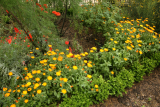
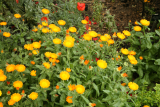


.JPG)
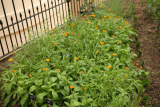
.JPG)
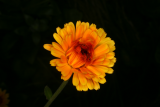
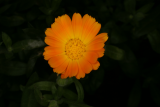

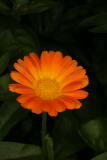
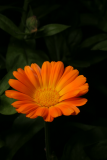
.JPG)